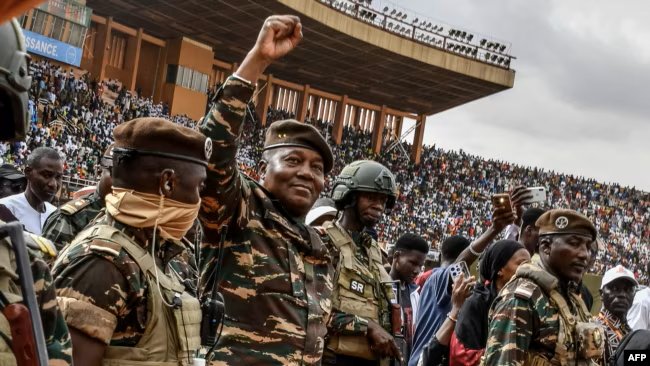In Summary
- The U.S. has completed its withdrawal from a $110 million drone base in Agadez, Niger, marking another significant Western military retreat in the region.
- This withdrawal adds to a series of Western military pullouts, including French forces from Niger and Mali, leaving the region more vulnerable to terror groups.
- Intelligence from U.N. member states indicates that terror groups like the al-Qaida-affiliated Jama’a Nusrat ul-Islam wa al-Muslimin (JNIM) and the Islamic State’s West African Province (ISWAP) are taking advantage of the reduced Western presence.
- JNIM, now considered the most significant threat in the Sahel, has 5,000 to 6,000 fighters and is expanding its influence across Burkina Faso, Mali, and Niger.
- ISWAP, with 4,000 to 7,000 fighters, is also gaining ground, especially in cooperation with the Islamic State in the Greater Sahara (ISGS).
- A fragile agreement between JNIM and ISGS is holding, allowing both groups to consolidate control over large territories in the Sahel.
- Analysts warn that regional militaries lack the capacity to stop the spread of these terror groups, with countries like Mali, Burkina Faso, and Niger increasingly at risk of falling under jihadist control.
- There are concerns about the role of Russian forces, including the Wagner Group, in the region, with doubts about their effectiveness and intentions, particularly after a significant loss of Wagner fighters in Mali.
Agadez, Niger-The United States has officially completed its withdrawal from a $110 million drone base in Agadez, Niger, marking the latest in a series of Western military retreats from the Sahel region. The move is seen as a significant shift in the U.S. approach to counterterrorism efforts in West Africa, a region increasingly plagued by the growing influence of terror groups linked to al-Qaida and the Islamic State.
U.S. Africa Command announced the final departure of troops from Air Base 201 on Monday, concluding a process that began after Niger’s military junta overthrew the country’s democratically elected president last year and demanded the withdrawal of U.S. forces. The U.S. pullout follows similar exits by French forces from Niger and neighboring Mali, as well as the collapse of a five-country alliance aimed at combating terror groups across the Sahel.
As Western forces withdraw, intelligence reports from U.N. member states suggest that terror groups in the region are capitalizing on the power vacuum. The Jama’a Nusrat ul-Islam wa al-Muslimin (JNIM), an al-Qaida-affiliated group, has been identified as the most significant threat in the Sahel. According to a recent U.N. Sanctions Monitoring Team report, JNIM commands between 5,000 and 6,000 fighters and continues to expand its influence, particularly in Burkina Faso, Mali, and Niger.
The report also warns that JNIM could soon establish an emirate stretching from central Mali to northern Benin if left unchecked. This expansion is accompanied by a rise in attacks, with JNIM and Islamic State affiliates averaging 125 attacks per month in the first half of this year, more than double the number of attacks during the same period last year.
The Islamic State’s West African Province (ISWAP) is also gaining strength, with an estimated 4,000 to 7,000 fighters. ISWAP has been working closely with Islamic State core leadership to establish terror cells and networks in Nigeria and beyond, further destabilizing the region.
Compounding the issue, a fragile détente between JNIM and ISWAP appears to be holding, allowing both groups to consolidate control over large swathes of territory in the Sahel. Analysts caution that regional militaries are ill-equipped to counter the growing threat, with some warning that Niger, like Mali and Burkina Faso, could soon fall completely under jihadist control.
The situation is further complicated by the involvement of Russian forces, including the Wagner Group, which has been active in countries like Mali and Niger. Despite their presence, there are significant concerns about the effectiveness and intentions of these forces, particularly in light of recent setbacks, such as the death of over 80 Wagner mercenaries in a separatist attack in northern Mali.
Liam Karr, Africa team lead at the Washington-based Critical Threats Project, expressed skepticism about the ability of Russian forces to fill the void left by Western withdrawals. “The Russian footprint there is much smaller,” Karr noted, pointing out that in Niger alone, only 100 to 200 Russian forces have replaced what was once a contingent of 1,500 French troops and over 1,000 U.S. service members.
https://www.africanexponent.com/u-s-abandons-niger-drone-base-amid-growing-influence-of-terror-groups-in-the-sahel/


